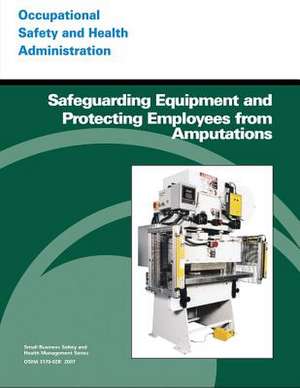Safeguarding Equipment and Protecting Employees from Amputations
Autor U. S. Department of Labor, Occupational Safety and Administrationen Limba Engleză Paperback
| Toate formatele și edițiile | Preț | Express |
|---|---|---|
| Paperback (2) | 92.14 lei 3-5 săpt. | |
| CREATESPACE – | 92.14 lei 3-5 săpt. | |
| CREATESPACE – | 102.04 lei 3-5 săpt. |
Preț: 92.14 lei
Nou
Puncte Express: 138
Preț estimativ în valută:
17.63€ • 18.34$ • 14.56£
17.63€ • 18.34$ • 14.56£
Carte disponibilă
Livrare economică 25 martie-08 aprilie
Preluare comenzi: 021 569.72.76
Specificații
ISBN-13: 9781497317284
ISBN-10: 1497317282
Pagini: 60
Dimensiuni: 216 x 280 x 3 mm
Greutate: 0.16 kg
Editura: CREATESPACE
ISBN-10: 1497317282
Pagini: 60
Dimensiuni: 216 x 280 x 3 mm
Greutate: 0.16 kg
Editura: CREATESPACE
